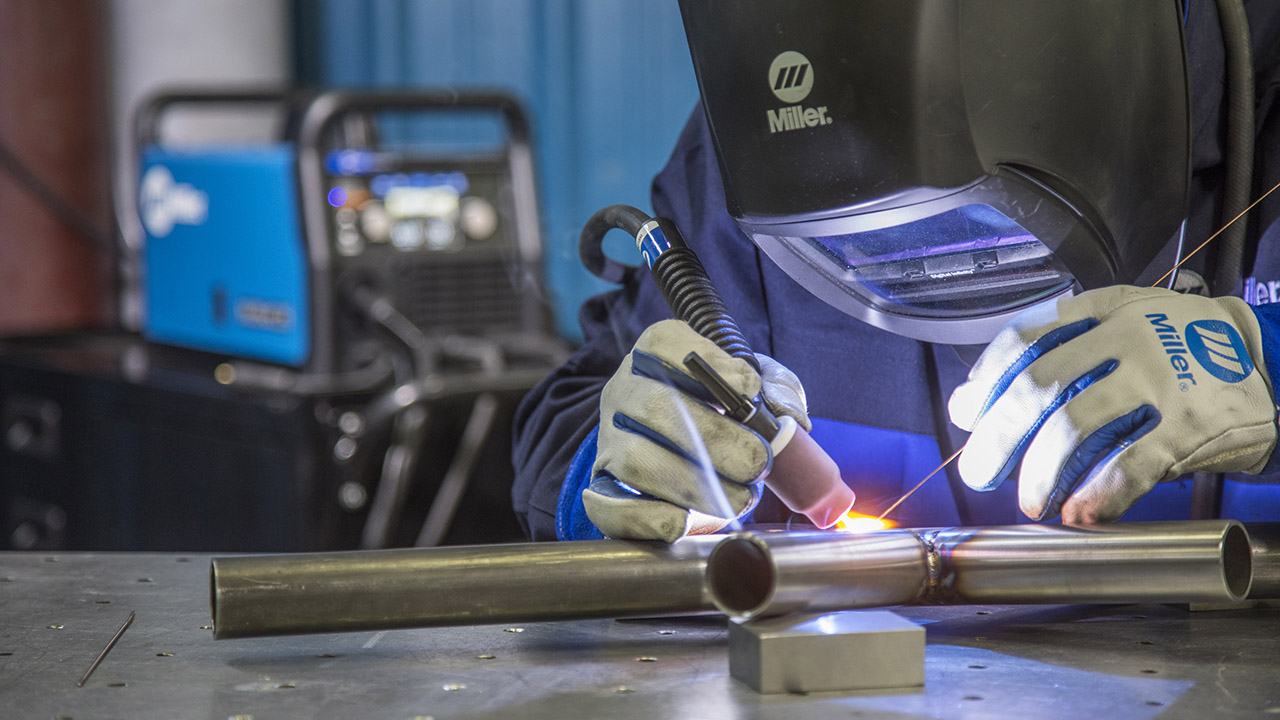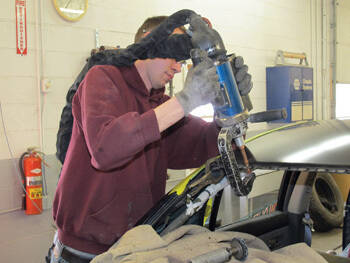How experts at Montana Mobile Welding and Repair Belgrade prevent porosity and distortion in welding
Everything about Welding: Secret Insights Into Techniques and Ideal Practices for Success
Welding includes a selection of strategies, each matched for particular products and applications. Comprehending these techniques, such as GMAW, SMAW, and TIG, is necessary for attaining ideal results. The right devices and security methods can not be ignored. As prep work and repairing play crucial roles in the welding procedure, understanding these aspects can substantially enhance the quality of the final item. What are the vital aspects that ensure a successful weld?
Comprehending Different Welding Techniques
Welding methods incorporate a range of methods, each suited to details applications and products. Amongst the most usual techniques are Gas Metal Arc Welding (GMAW), Shielded Steel Arc Welding (SMAW), and Tungsten Inert Gas Welding (TIG) GMAW, also recognized as MIG welding, is prominent for its rate and convenience, making it perfect for slim products. SMAW, or stick welding, is favored for its simpleness and efficiency in outdoor settings, especially with thicker steels. TIG welding uses accuracy and control, making it appropriate for elaborate job and non-ferrous metals (Welding). Each strategy has its unique benefits and factors to consider, enabling welders to choose the most effective approach based on the task's demands, material kind, and preferred end results. Comprehending these strategies is important for effective welding
Necessary Welding Equipment and Tools
While numerous welding techniques require details skills, the appropriate tools and devices are similarly essential for achieving top quality results. Vital welding devices consists of welding machines, which differ depending on the technique-- such as MIG, TIG, or stick welding. Protective equipment, consisting of gloves, safety helmets, and aprons, guarantees safety and security and comfort during the procedure. On top of that, clamps and components aid secure products in position, guaranteeing precision in welds. Consumables like welding poles, wire, and shielding gas are likewise crucial components that influence the quality of the weld. Tools such as grinders and cutters facilitate surface area preparation and post-weld completing, adding to a specialist result. Buying high-quality tools ultimately boosts the performance and efficiency of welding tasks.
Security Practices in Welding
Proper safety techniques are essential in the welding sector to shield workers from potential dangers. Welders have to use suitable personal safety devices (PPE), including headgears with proper shading, handwear covers, and flame-resistant garments. Adequate ventilation is important to lower direct exposure to unsafe fumes and gases generated throughout the welding procedure. Furthermore, workers ought to be educated in the appropriate handling of welding tools to avoid crashes. Fire security steps, such as keeping combustible products away from the welding location and having fire extinguishers readily available, are required. Normal inspections of tools and work spaces can help identify possible hazards prior to they cause accidents. By sticking to these safety techniques, welders can develop a safer working setting and reduce risks associated with their profession.
Preparing Materials for Welding
Preparing products for welding is a crucial step that significantly influences the high quality and integrity of the end product (Montana Mobile Welding and Repair Fabrication). Appropriate prep work entails cleaning up the surfaces to eliminate contaminants such as oil, corrosion, and dirt, which can compromise the weld. Methods such as grinding, sanding, or using solvents are frequently employed to attain a clean surface. In addition, making certain that the materials fit together snugly is essential; gaps can lead to weak welds. It's also essential to take into account the positioning and positioning of the elements, as this will affect the convenience of welding and the final end result. Selecting the appropriate filler product and making sure compatibility with the base steels is important for accomplishing strong, long lasting welds.
Tips for Achieving High-Quality Welds
Attaining high-grade welds needs interest to information and adherence to ideal techniques throughout the welding procedure. Correct joint prep work is vital, guaranteeing surface areas are complimentary and tidy from contaminants. Choosing the suitable filler product and welding method based upon the base metals is critical for excellent bonding. Maintaining constant travel speed and angle while welding can protect against issues and promote harmony. In addition, regulating heat input is essential; excessive warm can result in warping and deteriorated joints. If required, on a regular basis checking the welds throughout the process permits for instant modifications. Lastly, using appropriate post-weld treatments, such as cleansing and stress relief, can enhance the sturdiness and integrity of the weld, inevitably guaranteeing a successful result.
Troubleshooting Common Welding Issues
Welding commonly offers difficulties that can influence the quality and integrity of the end product. Common concerns such as porosity, irregular weld grains, and getting too hot can develop, each requiring details fixing methods. Recognizing these issues is necessary for welders to improve their abilities and achieve perfect results.
Porosity Issues Explained
Porosity can commonly be ignored, it remains a critical problem in welding that can jeopardize the honesty of an ended up item. Porosity refers to the existence of tiny gas pockets within the weld grain, which can weaken the joint and lead to early failure. This trouble typically arises from impurities, moisture, or inappropriate shielding gas protection throughout the welding process. To minimize porosity, welders should confirm that the base products are completely dry and clean, make use of appropriate securing gases, and preserve constant welding criteria. Frequently checking the equipment and atmosphere can additionally aid recognize potential issues prior to they materialize in the weld. Resolving porosity properly is important for accomplishing solid, sturdy welds that meet quality requirements.

Irregular Weld Beads
Irregular weld grains can significantly influence the high quality and strength of an ended up item. Numerous aspects contribute stick welding stainless steel to this issue, Clicking Here including incorrect travel rate, inaccurate amperage setups, and irregular electrode angles. When the welder moves too swiftly, a bead might show up slim and lack infiltration, while relocating as well slowly can trigger too much build-up. Additionally, using the incorrect amperage can result in either undercutting or extreme spatter, both of which compromise weld honesty. The welder's technique, such as irregular torch motion, can additionally cause irregular grain look. To mitigate these issues, welders must concentrate on keeping stable, regulated activities and making certain proper tools setups to attain uniformity in their welds. Consistency is essential to attaining dependable and strong welds.
Overheating and Warping Issues
Too much heat throughout the welding procedure can cause significant getting too hot and buckling concerns, affecting the architectural stability of the work surface. These problems frequently materialize as distortion, which can compromise placement and fit-up, making further assembly testing. Aspects adding to overheating consist of the choice of welding parameters, such as voltage and take a trip rate, along with the kind of product being welded. To mitigate these concerns, welders should preserve regular travel speed and ideal warmth input while keeping track of the work surface temperature. Additionally, preheating or post-weld warmth therapy can help reduce tensions triggered by rapid cooling - Montana Mobile Welding and Repair Welding. Routine inspection and adherence to ideal methods are essential in avoiding overheating and ensuring the durability and reliability of bonded frameworks
Often Asked Concerns
What Are the Profession Opportunities in the Welding Sector?
The welding industry supplies diverse career possibilities, consisting of placements as welders, assessors, engineers, and instructors. Experts can work in manufacturing, building, aerospace, and vehicle industries, gaining from strong need and competitive incomes in numerous roles.
Just How Can I Enhance My Welding Speed Without Sacrificing High Quality?
To enhance welding rate without giving up quality, one should exercise efficient methods, keep devices, maximize setups, and boost hand-eye coordination. Routine training and looking for comments can additionally substantially add to accomplishing much faster, top notch welds.
What Accreditations Are Readily Available for Welders?
Numerous certifications exist for welders, including those from the American Welding Society (AWS), the National Center for Construction Education And Learning and Study (NCCER), and numerous industry-specific organizations. These qualifications enhance employability and show skill efficiency.
Exactly How Does Welding Influence the Qualities of Metals?
Welding affects the buildings of steels by altering their microstructure, which can cause changes in ductility, strength, and hardness. Heat input and cooling prices throughout the process greatly affect these product characteristics.
Can I Bonded Dissimilar Metals Together?
